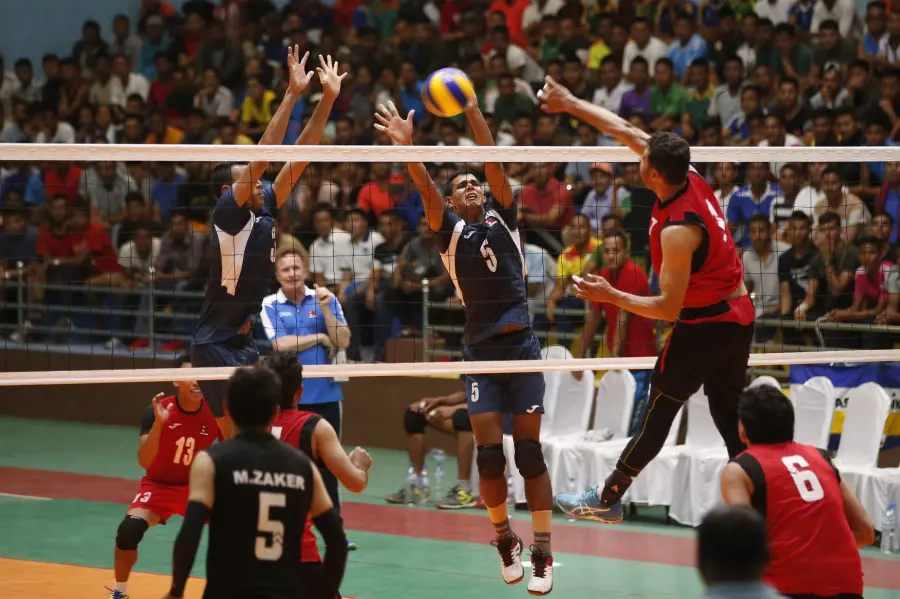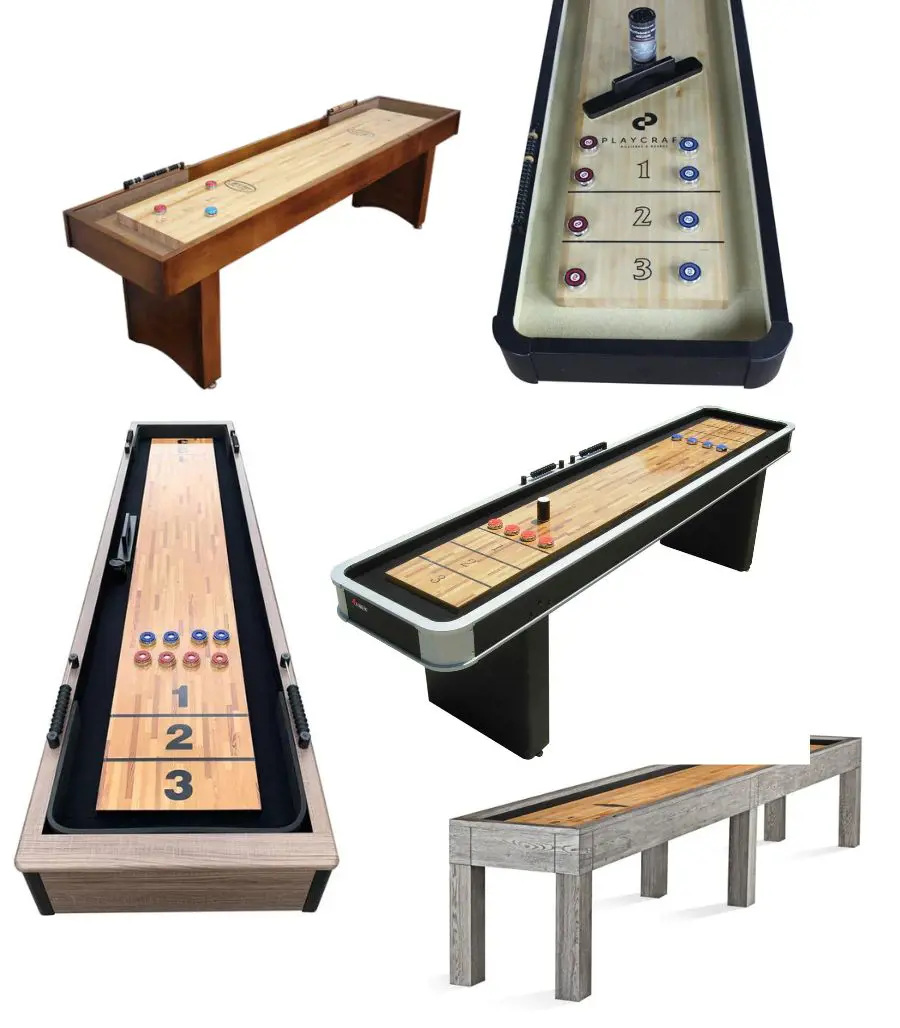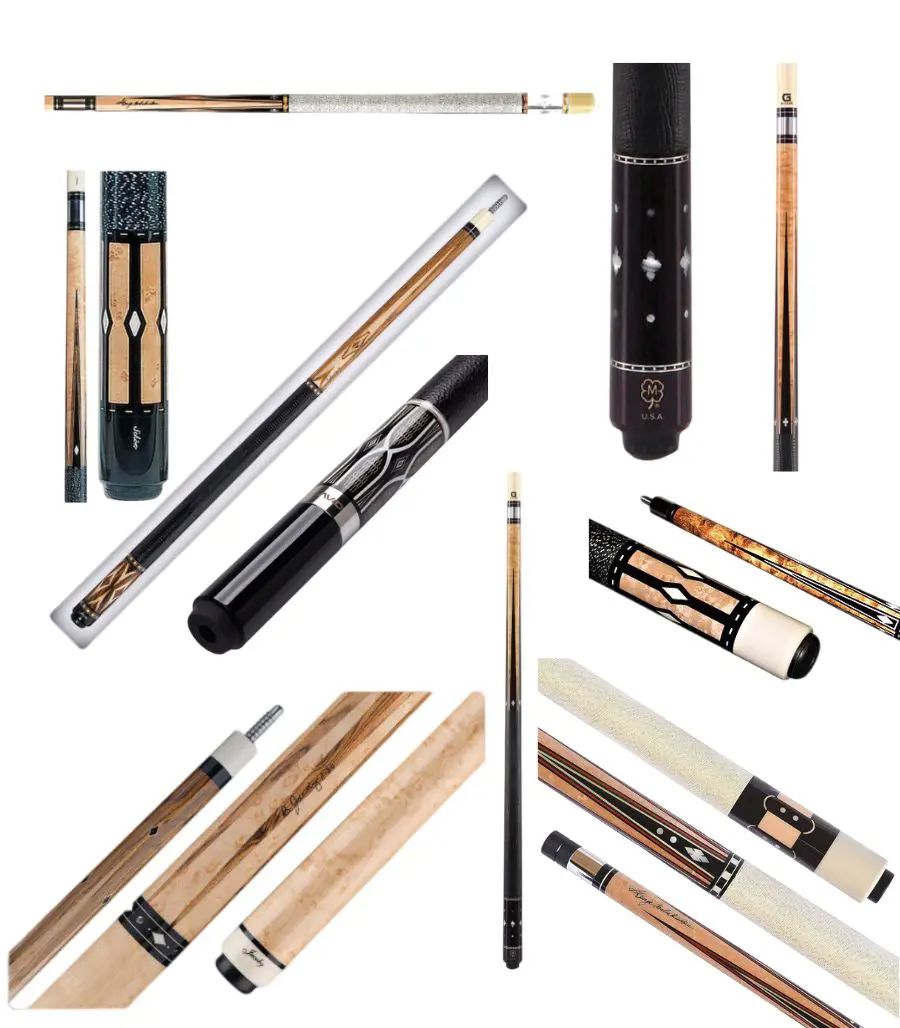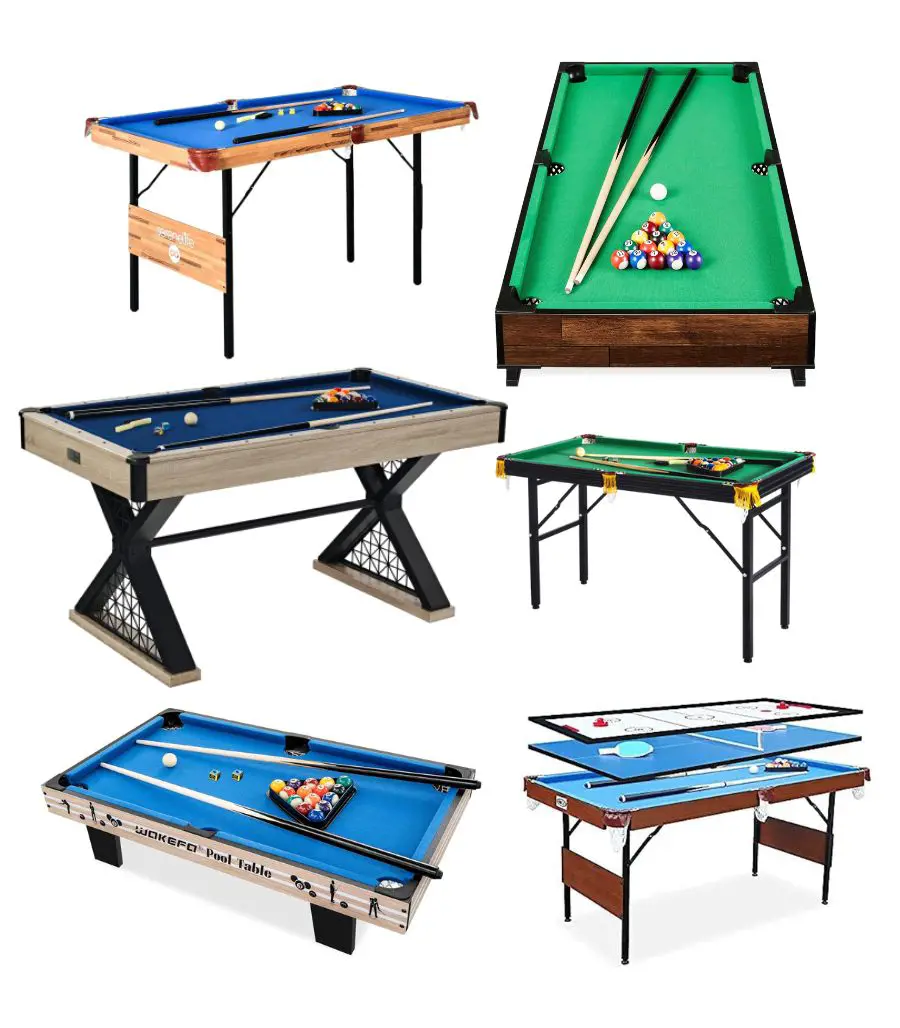Every position in volleyball plays an important role in a team's success. All players should perform their fullest duties successfully for the team to function as one unit and win.
Each player contributes to offense and defense, ultimately leading to a winning outcome. However, like most sports, Volleyball also has players who play offensive and defensive.
The offense is led by the setter, who is in charge of putting the ball in the best possible position for the hitters to score. Their court awareness, judgments, and passing abilities are important since they effectively set the offensive strategy and speed of the team.
An outside Hitter is one of the team's key offensive weapons, responsible for scoring the majority of the team's points. Their hard-hitting and vertical jump are critical to their success.
The defensive core of the team, the middle blocker, forms a solid barrier at the net to impede attacks. Their success is dependent on their jumping skill, timing as well as their height.
Likewise, defensive specialists add defensive depth by changing back-row players during rotations. It is critical that they can pass and cover the court.
Abbreviations for Volleyball Positions
| Abbreviation | Position |
| S | Setter |
| MB | Middle Blocker |
| OH | Outside Hitter |
| OPP | Opposite Hitter |
| L | Libero |
| DS | Defensive Specialist |
There are six positions in volleyball team and all the volleyball positions on court are explained below.
Setter

All volleyball positions have their importance and one of the first volleyball positions Setter. It is the position that is very important for organizing and putting together the offense of the team by setting attackers the ball to make hits productive.
The major responsibility of the setter is to deliver accurate and timely sets to their colleagues, allowing them to execute powerful and planned attacks. The setters are frequently referred to as the team's "quarterback."
Setters make contact with the ball with their fingertips, resulting in a clean and precise set, and to guarantee adequate control, they make a shape like a triangle with their thumbs and forefingers.
Sets are often delivered above and in front of the setter's head, letting attackers get closer to the ball and make a good hit.
They must assess and read the blocking plan of the opponent and adapt their sets properly. To exploit gaps in the opponent's defense, you must have exceptional court awareness and anticipation skills.
The player that plays in this position must be a good communicator as it is a key to win.
They should alert them of their set intentions and directing plays. This makes sure that everyone is on the same track and boosts the attacking efficiency of the squad.
While the setter is generally an offensive player, he or she should not be overlooked on defense. They help with digging and receiving serves, as well as back row defense, when they shift to the back row.
Setter's key roles include:
Running the Offense
- Decision Making
- Setting the Ball
- Adaptability
- Game Awareness
Technical Skills
- Passing
- Setting Technique
- Ball Control
- Team work
Outside Hitter

In volleyball, the outside hitter is the main offensive weapon, getting most of the team's points. They are the team's vital offensive strength, dominating the net with their quickness and attacking brilliance.
An outside hitter's major task is to attack the ball from the left side of the court.
They must be adept at serve receiving because they are frequently targeted by the opposition players during serves. Hence, a good pass lets the setter deliver a good set.
Typically, they are considered strong servers whose service can be vital points to the team. An accurate, strong serve can hinder an opposition's offense.
Outside hitters contribute significantly to front-row defense by getting involved and engaging in blocks. They seek to obstruct the opponent's net attacks, therefore contributing to the team's overall defensive strategy.
To be a good outsider hitter, you must have good jumping skills, quick feet, and adjust to changing scenarios.
The volleyball will not always be positioned where the outsider hitter wants, so they must be ready to receive hits from different angles.
A great outside hitter can take over a match by continuously scoring points and putting pressure on the opponent's defense.
Key Roles of a Volleyball Outside Hitter:
Attacking
- Hitting
- Jumping Ability
- Versatile
Passing and Defense
- Serve Reception
- Back-row Defense
- Coverage
Opposite Hitter

The opposing hitter, often known as the right-side hitter, is one of the most distinct and versatile volleyball positions. They are not the key scorers like the outside hitters, but they are vital to the team's attacking as well as defensive strategy.
The opposite hitter is distinguished by their bit more defensive duties. One of the numerous needs of this particular position is the ability to receive the service from the opposite side.
Hence, they serve as an alternate offensive option, taking sets from the setter and making attacks from the right side.
This adds another layer of complexity to the offense, keeping the opposition defense thinking and making more scoring chances.
The balance in the offensive line is provided by the opposite hitters as they drag away the attention from the outside hitter, which lets them make an offensive move openly and lowers the pressure to score each point.
Players who play as opposite hitters must be a complete and versatile player with skills. They should be able to strike from a variety of positions, blocking at the net, and defending in both the front as well as the back rows.
Because opposite hitters must spike the ball from the backline, it is hard to execute this task without being a good jumper, which is an essential skill to have for volleyball players of any position.
A complete opposite hitter can be a game changer and play a key role in their team's success.
Key Roles of a Volleyball Opposite Hitter:
Offense
- Hitting Variety
- Adaptability
- Hitting Efficiency
Defense
- Right-Back Defense
- Passing
- Blocking
Middle Blocker

Middle blocker is one of the volleyball player positions, they are majorly tasked to block incoming balls, and they primarily play in the center, which is why they are sometimes referred to simply as "the middle."
As the name suggests they are mostly responsible for Blocking.
They stand close to the net and block the opponent's attacks with their height and jumping skills. Because they protect the center third of the net, they are the first line of defense against spikes.
Likewise, players who play in this position are also in charge of excavating tipped balls or countering attacks that get past the block. They must be quick and flexible in order to react to these scenarios and keep the ball from touching the ground.
The middle blocker must read the opponent's setter and judge their motions to be in the ideal position for an appropriate block.
Middle blockers on the back row are in charge of providing the ball to the setter. They must be able to direct the pass and set up the setter for a fruitful attack.
They are often the tallest players on the squad due to their major duty of blocking and being the last line of defense.
The key roles of Middle Blocker are:
Defense
- Blocking
- Defensive Positioning
- Coverage
Offense
- Quick Hits
- Hitting Variety
- Reading the Block
Libero
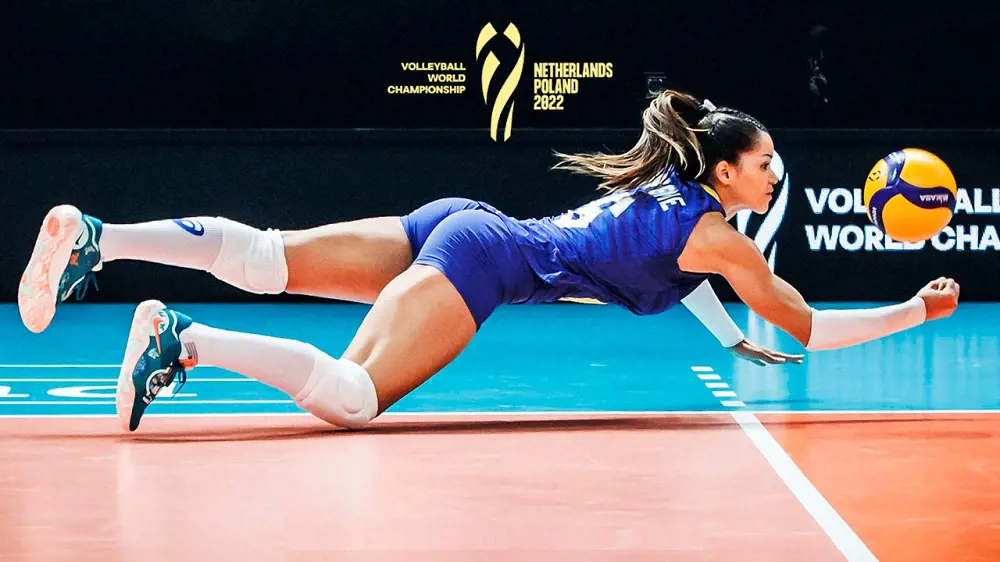
No position is more or less important in volleyball, every position has its own traits and roles. The libero is one of the positions in volleyball court, which is a specialized defensive position.
Libero volleyball positions, unlike the other players, can only play in the back row and are not permitted to serve, attack the ball, or block.
They are responsible for receiving the opponent's serve and once received, they must precisely send the ball to the setter so that the setter may build up an attack.
The libero is in charge of passing the spikes of the opponent as they must communicate properly with their teammates by directing them to open spaces on the court and shouting out the opponent's plays.
They are frequently the team's greatest defensive player and can considerably improve the team's overall defense, allowing other players to focus on attacking and setting rather than collecting and digging.
The libero is required to wear a distinctive colored shirt so that referees can easily identify them and enforce the position's rules.
Also, the jacket or jersey of Libero must be a different color than the jerseys worn by the rest of the team.
The key roles of Libero are:
Defense
- Serve Receive
- Digging
- Back-row Coverage
Offensive
- Passing
- Second Contact
- Tactical Serving
Defensive Specialist
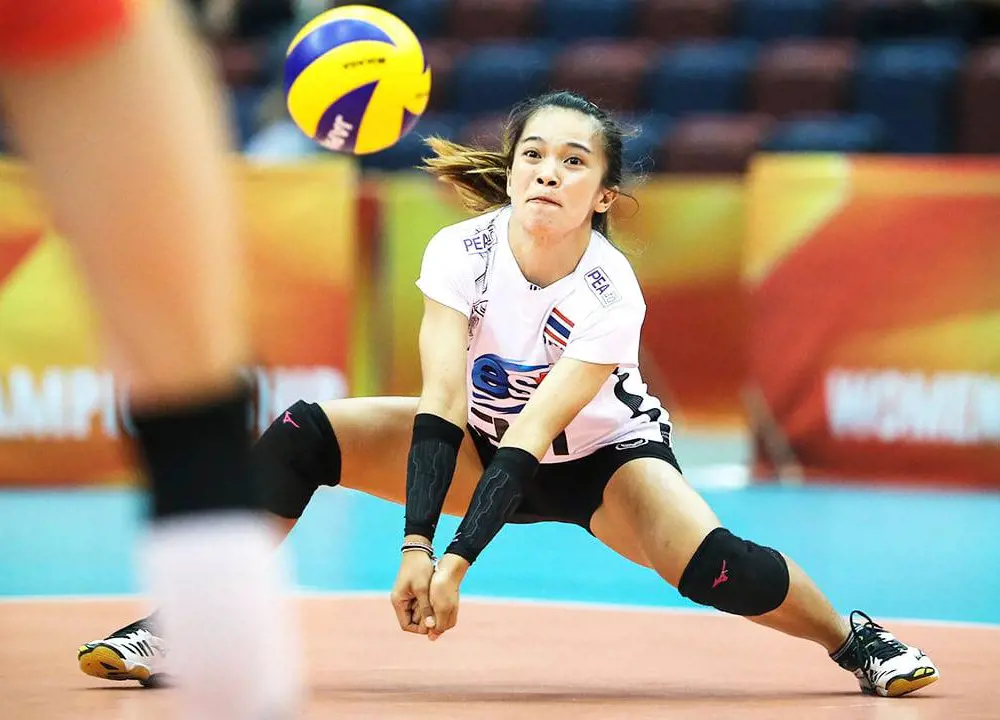
The defensive specialist is one of the different volleyball positions, which is a defensive volleyball position that may not be found on every team; some teams do not even have a defensive specialist.
They are one of those positions Defensive specialists are not frequently used by teams.
The ability to substitute any player on the court distinguishes defense specialists from other volleyball positions.
This will be deducted from the team's total of 12 substitutions. Traditionally, the defensive specialist focuses on ball handling and passing and collaborates effectively with the libero.
Coaches don't commonly use defensive specialists in games, but they're excellent in high-pressure situations. When the game is nearing its end and you are fighting for the set with a tight scoreline, a coach would frequently insert a defensive specialist into the game to hold the fort.
Defensive specialists are top at receiving serves and blocking, therefore they frequently come in late in a close game to replace a player who is not so good at things as such.
So the major difference between a defensive specialist and a libero is that teams with a good offensive player who suffers with serve-receive may opt for a defensive specialist who can also contribute offensively in the back row.
Teams with a good defensive player who excels in passing and defensive bumps, on the other hand, may prioritize the libero's flexibility and freedom in substitution.
The key roles of Defensive Specialist are:
Defense
- Serve Receive
- Digging
- Back-row Coverage
- Communication
Offensive
- Passing
- Second Contact
- Transitioning


